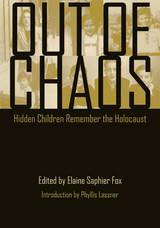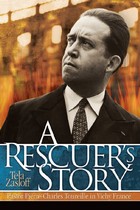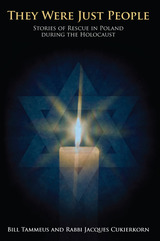

The writers recall being on the run between different countries, escaping over mountains, hiding and even sometimes forgetting their Jewish identities in convents and rescuers’ homes and hovels, basements and attics. Some were left on their own; others found themselves embroiled in rescuer family conflicts. Some writers chose to write story clusters, each one capturing a moment or incident and often disconnected by memory or temporal and spatial divides.

A powerful remembrance of the lessons and legacy of Jan Karski, who risked his life to share the truth with the world—and a cautionary tale for our times.
Richly illustrated with stills from the black-and-white film adaptation of the acclaimed stage play, Remember This: The Lesson of Jan Karski tells the story of World War II hero, Holocaust witness, and Georgetown University professor Jan Karski. A messenger of truth, Karski risked his life to carry his harrowing reports of the Holocaust from war-torn Poland to the Allied nations and, ultimately, the Oval Office, only to be ignored and disbelieved. Despite the West's unwillingness to act, Karski continued to tell others about the atrocities he saw, and, after a period of silence, would do so for the remainder of his life. This play carries forward his legacy of bearing witness so that future generations might be inspired to follow his example and "shake the conscience of the world."
Accompanying the text of the stage play in this volume are essays and conversations from leading diplomats, thinkers, artists, and writers who reckon with Karski's legacy, including Secretary of State Madeleine Albright, Ambassador Stuart Eizenstat, award-winning author Aminatta Forna, best-selling author Azar Nafisi, President Emeritus of Georgetown Leo J. O'Donovan, SJ, Ambassador Samantha Power, Ambassador Cynthia P. Schneider, historian Timothy Snyder, Academy Award nominated actor David Strathairn, and best-selling author Deborah Tannen.


READERS
Browse our collection.
PUBLISHERS
See BiblioVault's publisher services.
STUDENT SERVICES
Files for college accessibility offices.
UChicago Accessibility Resources
home | accessibility | search | about | contact us
BiblioVault ® 2001 - 2024
The University of Chicago Press









